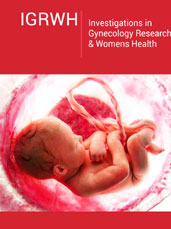- Submissions

Abstract
Investigations in Gynecology Research & Womens Health
Impact of Ureaplasma Infection on Sperm Morphometry and Fertility
-
Open or CloseK. Aruna, A. Smitha Sree, Pranati Mahapatro, Thota Sivanarayana and G.A. Rama Raju*
Center for Assisted Reproduction, Krishna IVF Clinic, India
*Corresponding author:G.A. Rama Raju, Center for Assisted Reproduction, Krishna IVF Clinic, Maharanipeta, Visakhapatnam 530002, Andhra Pradesh, India
Submission:July 30, 2024;Published: August 16, 2024
Abstract
This study presents novel findings on the impact of Ureaplasma urealyticum (U. urealyticum) infection on sperm morphometry and male infertility. We conducted a retrospective study involving 594 infertile male participants diagnosed with teratospermia at a specialized infertility centre. Semen samples were analysed using Computer-Assisted Sperm Analysis (CASA) to assess sperm motility, morphology, and concentration, while PCR techniques were employed to detect U. urealyticum infection. Our comprehensive dataset revealed significant differences in the midpiece area between U. urealyticum-positive and -negative groups, with the midpiece area emerging as a potential marker for infection. Specifically, the midpiece area in U. urealyticum-positive samples was significantly reduced (1.70±0.38μm²) compared to U. urealyticum-negative samples (1.77±0.47μm², p = 0.0013). Other morphometric parameters, such as head area, head length, head width, and midpiece width, did not show significant differences. Advanced statistical analyses, including Random Forest and t-tests, were utilized to identify these differences. Correlation analyses further revealed stronger associations between morphological defects in U. urealyticum-infected samples. These unique findings underscore the significant impact of U. urealyticum on the midpiece area of spermatozoa, potentially compromising sperm motility and fertilizing capacity. Our results highlight the importance of screening for U. urealyticum in the evaluation of male infertility and suggest that targeted antibiotic therapy combined with antioxidant supplementation may improve reproductive outcomes. This study deepens our understanding of the implications of U. urealyticum infection on male fertility, paving the way for further research in clinical settings to explore the specific mechanisms by which U. urealyticum affects sperm quality and to develop targeted interventions.
Keywords: Ureaplasma; Sperm morphometry; Midpiece area; Male infertility; Random forest; Statistical analysis
 a Creative Commons Attribution 4.0 International License. Based on a work at www.crimsonpublishers.com.
Best viewed in
a Creative Commons Attribution 4.0 International License. Based on a work at www.crimsonpublishers.com.
Best viewed in 








.jpg)






























 Editorial Board Registrations
Editorial Board Registrations Submit your Article
Submit your Article Refer a Friend
Refer a Friend Advertise With Us
Advertise With Us
.jpg)






.jpg)














.bmp)
.jpg)
.png)
.jpg)










.jpg)






.png)

.png)



.png)






